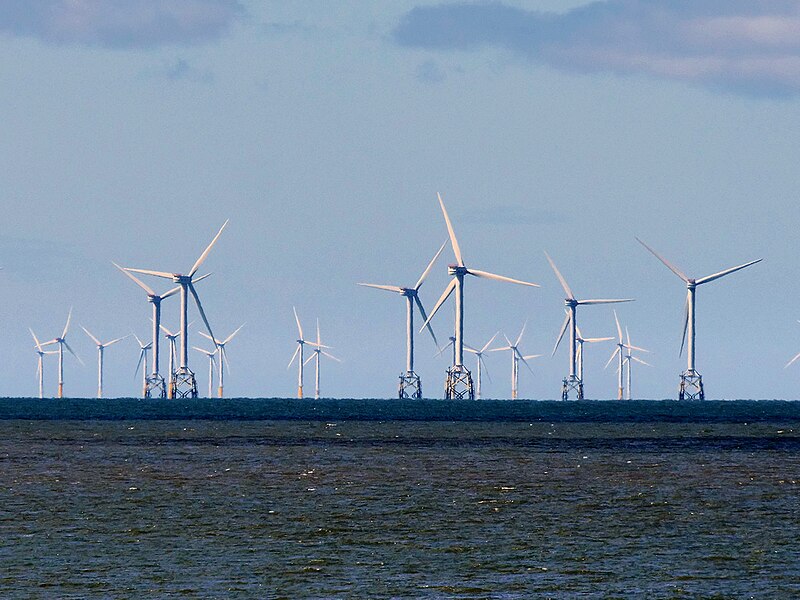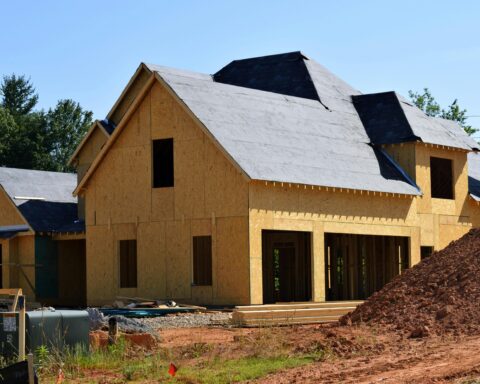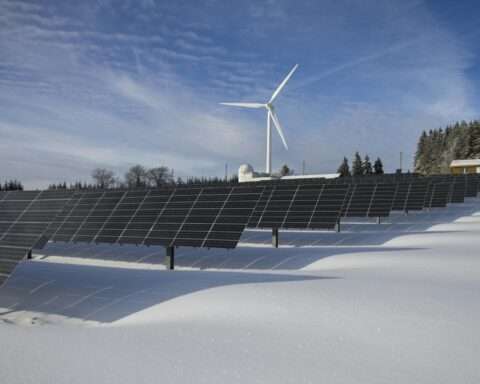California is moving forward with plans to harness 25,000 megawatts of offshore wind energy by 2045, but the journey ahead is a minefield of technical challenges, environmental concerns and a price tag that could exceed $20 billion.
The California Energy Commission (CEC) recently released a comprehensive strategic plan detailing the state’s roadmap to achieve its offshore wind energy production goal, which would be enough to power about 25 million homes.
The push comes as several other states have individual goals totaling 84,000 megawatts, and the federal government aims to deploy 30,000 megawatts of offshore wind nationwide by 2030.
Offshore wind is a crucial part of the transition to non-polluting renewable energy sources, in part because it does not compete for land with other uses, and ocean winds are more consistent than other wind sources. But the race to deploy offshore turbines has faced significant headwinds.
High interest rates, increasing costs from inflation, supply chain disruptions and regulatory hurdles have led to delays and cancellations of proposed projects. The first utility-scale offshore wind projects began delivering power to the grid in New York and Massachusetts earlier this year. But California — with the largest goal of any state — does not have any offshore wind projects under construction or in an advanced development phase, according to an analysis from Canary Media.
California’s plan acknowledges the tough road ahead – both the unique obstacles posed by rocky economic waters and the literal deep waters off the California coast. But energy policymakers in the state are confident the California Energy Commission’s new plan can turn the tide.
“Adopting this comprehensive strategic plan for offshore wind development marks yet another significant milestone in California’s journey to a 100 percent clean energy future,” CEC Chair David Hochschild said in a press release. “Offshore wind has the potential to accelerate the clean energy transition by providing a consistent, reliable source of clean electricity, supporting our ambitious climate goals, creating local manufacturing jobs and driving economic development.”
Unlike the shallower waters of the East Coast, California’s steep continental shelf requires the use of floating wind turbines anchored in depths up to 2,600 meters — a technology less proven than stationary turbines. This technological leap demands continued research and development.
To meet infrastructure needs, the strategic plan estimates that $11-12 billion will be required just for port improvements to support offshore wind development. Transmission infrastructure poses another hurdle, particularly on the North Coast. A single 260-mile transmission line from Humboldt County to the San Francisco Bay Area is projected to cost between $3.1 billion and $4.5 billion.
The expansion of offshore wind has also garnered mixed responses. The report describes opposition from environmental advocates worried about the impact on marine ecosystems. The fishing industry and Native American communities have also expressed concerns.
To address these multifaceted challenges, California’s new strategic plan outlines several key components:
- The state plans to implement a coordinated multi-agency permitting process to streamline approval of offshore wind projects.
- Regional transmission planning efforts are ramping up through strengthened coordination between the California electric grid operator, California public utility commission and CEC.
- Workforce development is continuing through partnerships between industry, educational institutions and communities. The plan also encourages the development of project-labor agreements and community-benefits agreements to ensure equitable economic benefits.
- Comprehensive environmental research and monitoring programs are planned to guide project siting and assess impacts.
- Early and meaningful consultation with Native American tribes, fishing communities and other stakeholders is emphasized throughout the planning process. This is formalized through meeting with the California Offshore Wind Fisheries Working Group and ensuring California Native American tribes have a direct role in decision-making.
While the strategic plan is primarily a roadmap, some concrete steps are already in motion. In May 2024, the California Independent System Operator approved new transmission projects for the Humboldt area, with an estimated in-service date of 2034. Offshore wind lease holders have collectively committed over $50 million to support affected communities and ocean users.
However, the timeline for realizing large-scale offshore wind generation extends well into the 2030s and beyond. The first major projects are not expected to come online until the early 2030s. In 2028, the Department of Interior will offer up more acreage of federal waters off the coast of California for leases to build offshore wind.
“As we move forward with our plans to develop offshore wind energy in California, we are not only investing in renewable energy, but also in the future of our state’s economy,” said Dee Dee Myers, senior adviser to Gov. Gavin Newsom and director of the Governor’s Office of Business and Economic Development.
Photo by David Dixon













